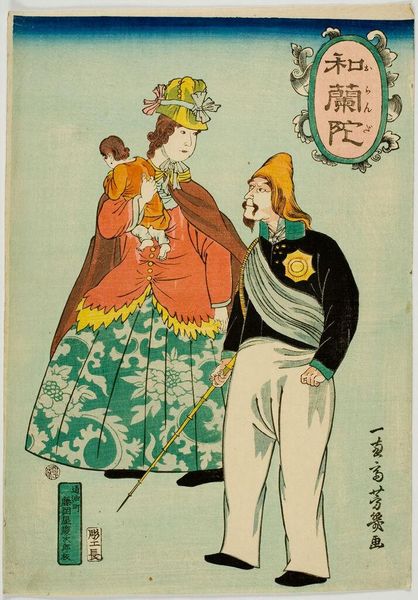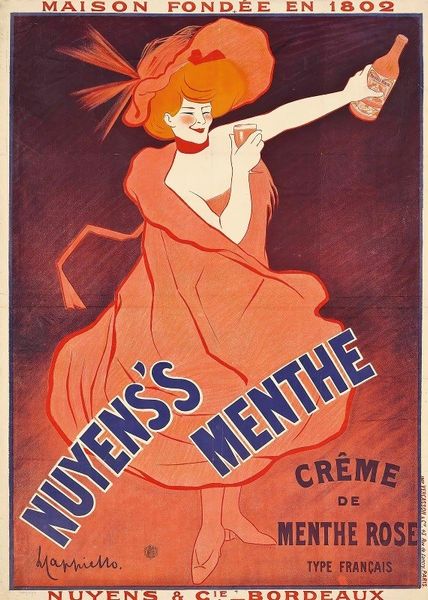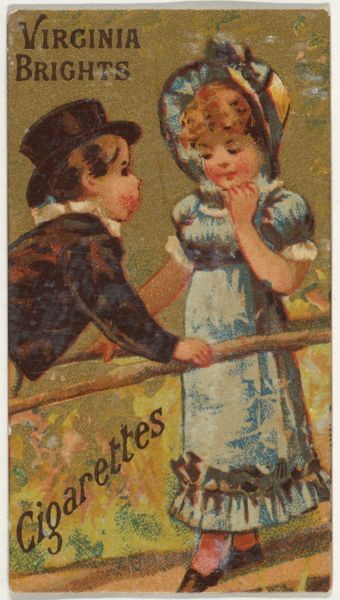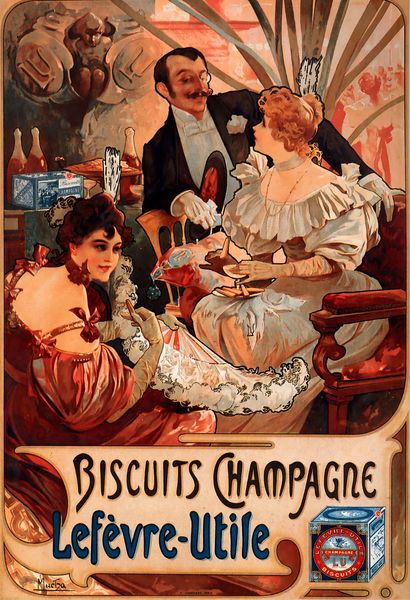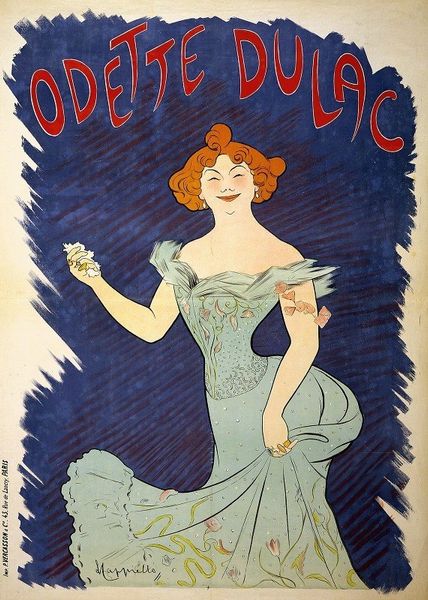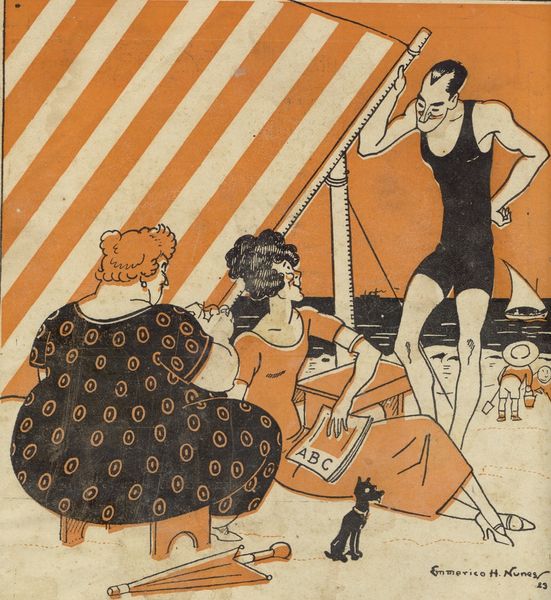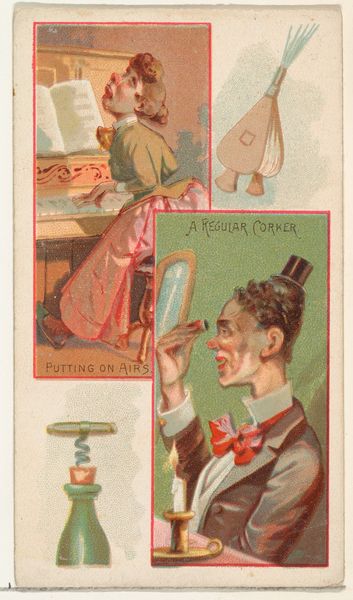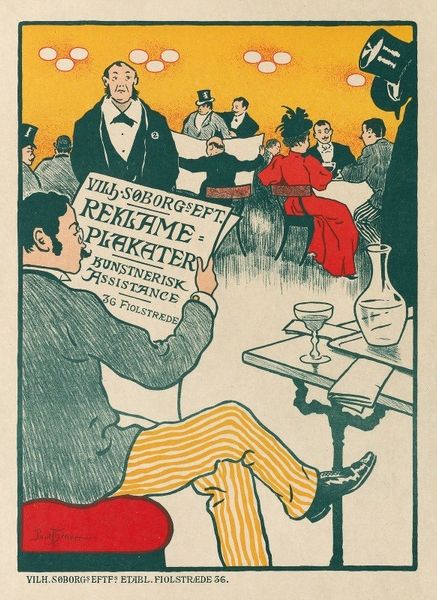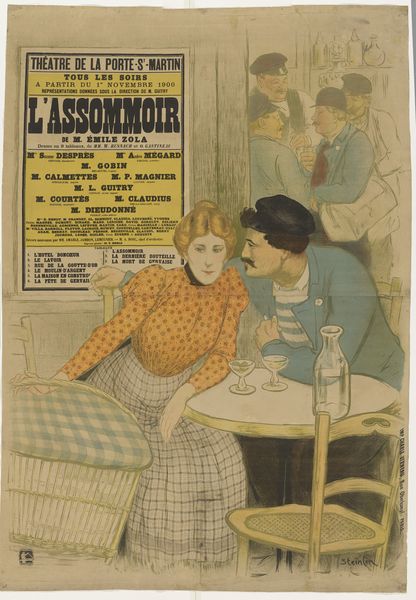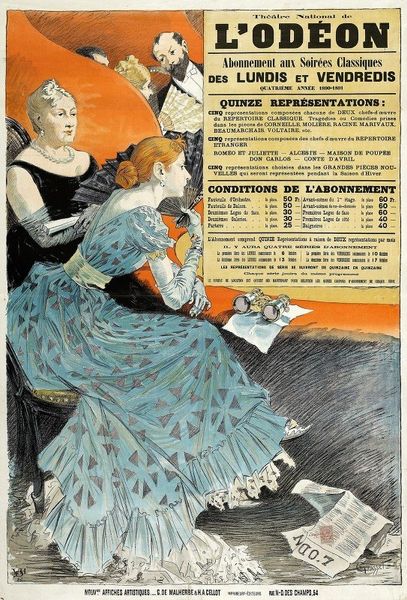
Copyright: Public Domain: Artvee
Editor: Here we have Leonetto Cappiello’s 1901 poster, "La Marquisette". It's an advertisement, but feels very much of the Art Nouveau period. It makes me think about turn-of-the-century Parisian life and leisure. What can you tell me about it? Curator: Well, let’s think about what went into creating this poster, a seemingly simple lithograph. It highlights the mechanics of visual persuasion. Consider the artist as a kind of factory, turning out images on demand. It wasn't about personal expression, but about shifting product. Cappiello became successful due to an understanding of the rapid transformations of consumer culture. Editor: So, you see it primarily as a product of its economic environment? The production dictates the reception, perhaps? Curator: Precisely! Cappiello moved away from complex scenes common in earlier advertising, toward single, bold figures. This poster streamlines visual communication for mass consumption. Think about the division of labor involved – the paper mill, the print shop, the distribution networks. What looks effortless represents a whole system. Editor: Interesting. I was so focused on the artistic style, the impressionistic brush strokes, but you are reframing it as a point in the mass-production and marketing. Does considering the labor change the way we see it as art? Curator: Absolutely. The materiality of the poster itself - the ink, the paper - connects it directly to the industrial processes of its time. By focusing on this, we question traditional notions of artistic genius and engage with the socioeconomic conditions that gave rise to it. Editor: I never thought of it that way before, but it definitely gives me a new perspective on the poster and others like it. It isn’t just about aesthetics but about the economic landscape of its time.
Comments
No comments
Be the first to comment and join the conversation on the ultimate creative platform.


